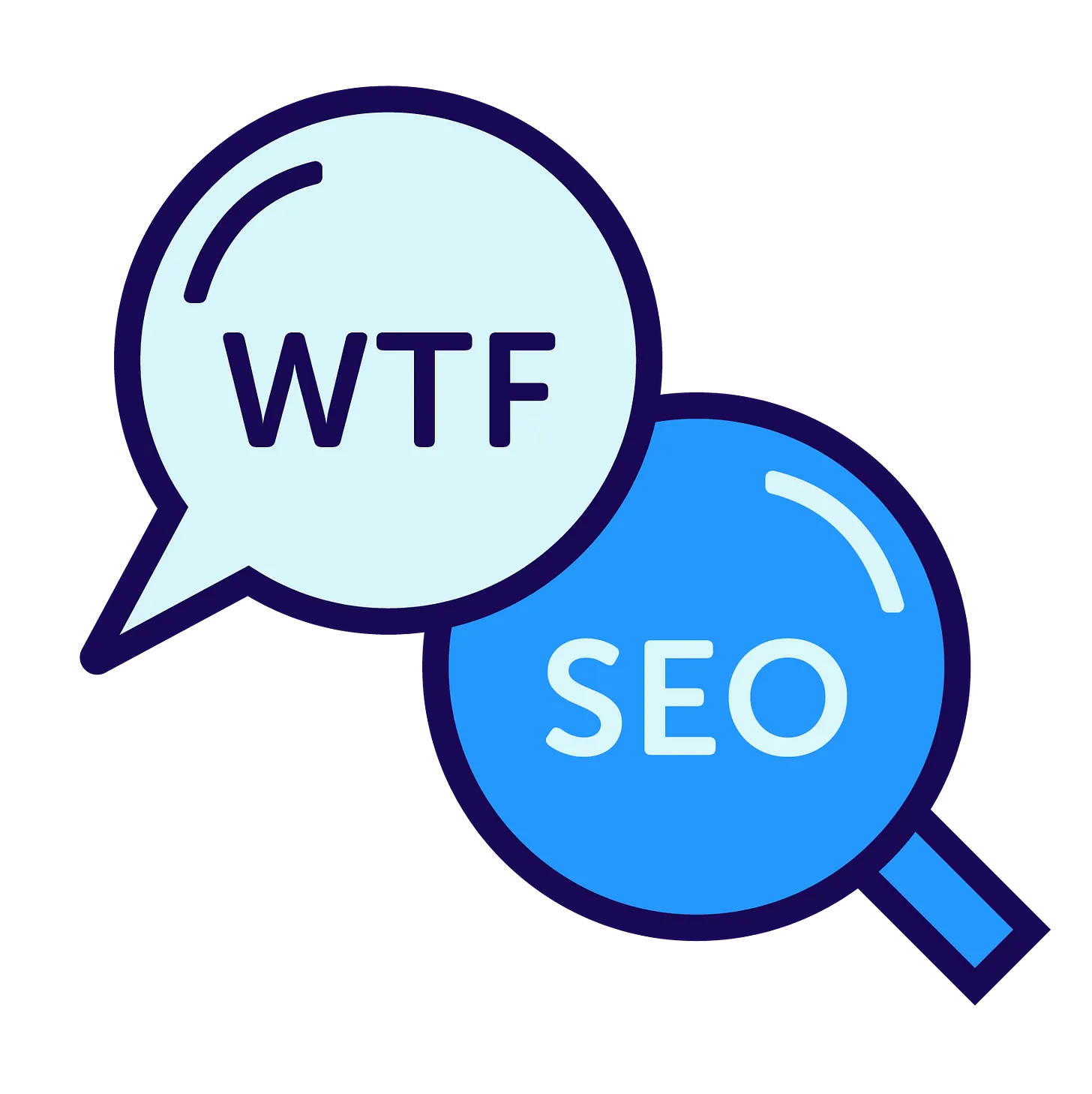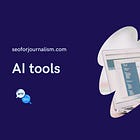ChatGPT, AIO and other alternatives to traditional search
A product-by-product breakdown of organic search alternatives like AI Mode and ChatGPT
#SPONSORED
Trisolute: Learn how to level up your brand strategy for AI search at News Reach Con 2025
Check out the just-released program! At Trisolute's News Reach Con, we are bringing together the best and brightest news SEO experts to share actionable insights on everything from growing brand authority to optimizing evergreen content to revamping workflows for AI search success.
Hello, and welcome back. Jessie and Shelby here, back from an extremely windy weekend in Toronto. Jessie lost in the semifinals of the CBC softball tournament, but won a three-pitch championship final (ending an undefeated season). Meanwhile, Shelby and her team finished first (!!) in their division at the Tim Hortons Dragon Boat Festival and welcomed a new season of tragic Baltimore Ravens football. Fall is officially here!
This week: Organic search alternatives like AI Mode and ChatGPT. We give a product-by-product look at how many people use each platform and their use cases, as well as what to do about the threat to publisher traffic.
Catch us at ONA! We’re in New Orleans this week, speaking about AI, branding and why your people are your secret weapon. And for the next issue, we’ll recap our favourite insights and highlights from the conference!

Let’s get it.
THE 101
Non-traditional alternatives to Google
The launch of ChatGPT in 2022 caught Google off guard and forced the search kingpin to scramble to keep up. More broadly, it kicked off an AI revolution.
Now, nearly every company or digital product has embedded AI to some degree.
Unlike traditional search, the answers provided by ChatGPT and similar AI-powered tools don’t really require a person to click to a publisher website. For the reader, that lack of “friction” is a boon. For publishers, it’s a threat.
Today, more than 987 million people use AI chatbots, according to Exploding Topics. Here's a brief look at the leading platforms, their market share and how publishers can respond to the threats to traffic.
ChatGPT
What is it: The conversational artificial intelligence chatbot developed by OpenAI. It uses a large language model (LLM) — trained on troves of data scraped from the web — to generate synthetic answers to user prompts. ChatGPT, like all AI tools, has limitations: It can "hallucinate" and doesn’t have access to real-time information.
Usage/market share: As of August, there are 700 million weekly active users globally (67.7 million in the U.S.), according to Backlink.io. According to Semrush data, it’s the fifth most-visited site in the world (Google is the most-visited, followed by YouTube and Facebook). OpenAI says there are 10 million paying subscribers to its product, and the average session is almost 14 minutes.
Perplexity AI
What is it: Perplexity is an “AI-powered answer engine” that produces answers to user questions — and can do so in real time. It was created by Perplexity AI, a company founded in 2022, and uses GPT-4, Claude and its own Sonar/R1 AI models to create synthetic answers — with citations — to user prompts.
Usage/market share: There are 15 million active monthly users with more than 100 million requests per week, according to Exploding Topics. The United States ranks third for its user base after Indonesia and India.
Claude
What is it: Claude AI is a generative AI chatbot and set of LLMs created by Anthropic, an American AI startup. Its behaviour is governed by the principles of Constitutional AI. Claude is multimodal (accepting text, audio and visual inputs) and can produce answers to questions, summarize documents and generate long-form text outputs.
Usage/market share: Claude has 20 million total active users, making it one of the lesser-used chatbots.
Microsoft Copilot
What is it: Microsoft Copilot is a “conversational, AI-powered assistant” that helps with tasks on your phone, computer and browser. Copilot can also be integrated into apps like Word or Excel to boost productivity, automate takes and provide "contextual intelligence."
Usage/market share: Microsoft Copilot has 100 million million total active users (ranking it among the most-used options).
Google’s AI
Google Gemini
What is it: Gemini is the multimodal model that powers Google’s AI features on its apps (Gmail and Google Suite), AI Overview and AI Mode. Gemini was the replacement for Bard, and the company says it is “much more powerful” than its direct rival, ChatGPT. Being multimodal, Gemini is able to understand text, video, voice and images and convert it into a clear and concise answer.
Usage/market share: Since Gemini supports all of Google’s features, the market share depends on how you segment the model. According to a study done by First Page Sage, Gemini occupies about 13.50 per cent of the market share for AI search. A survey done by Morgan Stanley of Americans in March found that 40 per cent of respondents reported using Gemini at least once a month, with over 400 million users.
Google AI Overviews
What is it: AI Overviews are responses in Google Search that use AI, providing short summaries to a user's query. It is integrated directly into the search experience — at the top of results and sometimes within People Also Asked or other SERP features — and uses patterns and structures from the data it is trained on to create something new. It appears automatically and cannot be turned off.
Usage/market share: Since AI Overviews automatically load on Google Search, the “accounted” for users is over two billion.
Google AI Mode
What is it: An advanced AI-powered search experience akin to ChatGPT, separate from regular results. It provides an AI-generated response to a prompt, allowing users to ask follow-up questions. AI Mode uses query fan-out technique, synthesizing information from all corners of the internet, including Google Maps, YouTube, the Knowledge Graph and more.
Usage/market share: AI Mode is now available in 180 countries and regions (and still rolling out), and has over 100 million monthly users.
The threat to traffic from these platforms – and what to do it
Referral traffic to publishers from AI platforms like ChatGPT, Claude, Perplexity AI and others is growing — but still makes up a very small share of overall reach.
Traditional search still drives more traffic than these tools. However, questions to consider going forward are: how much traffic will platforms like ChatGPT draw away from existing outlets? What sorts of traffic will publishers lose (ie., views to “What is X?” content), and how can those publishers find an audience or adapt strategy to make up for those losses?
These tools provide natural-sounding answers, on their own platforms, to complicated questions. That was previously only done by human reporters,
And as Google pushes users to use AI Mode — and incorporates more AI Overviews into traditional search — quality traffic will continue to fluctuate.
The era of “easy SEO” is largely over. It is now all about brand differentiation. To respond to this changing behaviour, publishers should focus on the content, tools and commentary that only they can do — and that provides real value to readers.
Instead of “What is X?” content, focus on stories with unique insights or exclusive data. Develop tools that your audience is willing to pay for and solve real problems. Experiment with new top of the funnel tactics. Then, push readers toward your most valuable assets that encourage conversions and audience loyalty.
(More about this next week when we share highlights from our ONA presentation on brand.)
The bottom line: When ChatGPT and other AI chatbots/tools emerged, the search experience fundamentally changed. Google, too, has made significant changes to its SERPs to integrate more AI — like AI Overviews and AI Mode — which makes it harder for publishers to get referrals from search. The tools mentioned above are alternatives, but they don’t generate the same level of traffic as traditional search.
#SPONSORED - The Classifieds
Get your company in front of more than 13,000 writers, editors and digital marketers working in news and publishing. Sponsor the WTF is SEO? newsletter!
THE JOBS LIST
Audience or SEO jobs in journalism. Want to include a position for promotion? Email us.
OpenAI is hiring a Content Strategist for chatgpt.com (San Francisco, California).
BBC is hiring a Social Content Producer (London, U.K.).
RECOMMENDED READING
Google and AI news and updates
🤖 Roger Montti: Updated documentation asks publishers to change how they use JavaScript to block users from paywalled content.
🤖 Michael Liedtke: Google can keep Chrome, but needs to give up some data, judge rules in antitrust case.
Even more recommended reading
🖥️ Josh Dzieza: How Wikipedia survives while the rest of the internet breaks.
🥔 Robert Hart: OpenAI could launch its own AI chip next year.
🧠 ChatGPT: Why language models hallucinate.
🤔 Duane Forrester: SEO has been tactical for 20 years. Generative AI forces the strategy question.
🗞️ Charlotte Tobitt: AI bots bombard publisher websites with “no meaningful value exchange”.
A survey suggests readers will still click on links after reading Google AI Overview.
ℹ️ Gianluca Fiorelli: Why informational content still matters in the AI Search era.
💲 Dylan Butts: AI skills are in high demand — and employers are willing to pay a premium for them.
📈 Anthony Cardillo: I tried the 9 best AI search engines: Here’s what works.
What did you think of this week's newsletter?
(Click to leave feedback.)
Catch up: Last week’s newsletter
Have something you’d like us to discuss? Send us a note on Twitter (Jessie or Shelby) or to our email: seoforjournalism@gmail.com.
Written by Jessie Willms and Shelby Blackley







